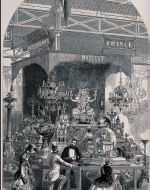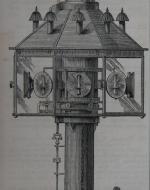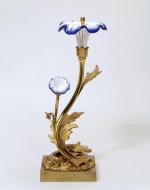Created by El Marks on Tue, 02/18/2025 - 08:41
Description:
The Victorian era was a time of rapid advancements in technology and a shifting industrial landscape, and lighting fixtures were no exception. Victorians largely relied on three forms of lighting: candlelight, oil lighting, and gas lighting. One home might even incorporate all three types of lighting in one room––with, for example, a candelabra on the mantlepiece, oil lamps on tables and oil sconces on the walls, with a gas chandelier overhead. Throughout the period, candles were still used for most regular activities, such as cooking, reading, or playing games, as they were portable, relatively cheap, and most families already owned candlesticks or a candelabra. Oil lamps often burned brighter than candles and were often used throughout the period. Although most streets in London had gas lighting by 1816, it wasn't until the 1860s that gas lighting would become widespread in the household; gas lighting was initially distrusted for use in homes until 1859, when gas fittings were put in the new Houses of Parliament. Gas lighting was also thought of as more "common" than oil and candlelight, so some of the upper classes were hesitant to introduce it into their home. In both light fittings and shades, the Victorians showed their penchant for elaborate decoration, even when the styles of the time became simpler. Light fittings were often ornate with ornamental bronze moldings, and glass shades were frequently frosted, colored, and etched. Lighting could be a signal of wealth and status with wealthier people able to prioritize decoration over functionality and keep up with the latest trends and innovations. Electric lighting was another innovation of the Victorian period, but was not yet popular at the time of the Great Exhibition and rarely used in Victorian homes.
El Marks, "Lighting Fixtures of the Great Exhibition," 2025, cardboard, fabric, ink, collage. This booth displays five lighting fixtures collaged onto an image of the Great Exhibition, framed by fabric meant to mimic curtains. The image is surrounded by names of premier lighting manufacturers at the time, all which had their work shown at the Great Exhibition. The lamps are outlined and colored in for emphasis.
"Great Exhibition, London, 1851: The Exhibition stand of Matifat Showing Gilt Bronze Lamps, Vases, Clocks and Other Ornaments," 1851, Anelay, Henry, from Wellcome Collection 32497i. Wood engraving, image 24 x 15cm. The man in the center is likely Charles Stanislas Matifat, who ran the Matifat lighting business in France. The image shows an elaborate display of ornate bronzework, featuring several different types of lighting fixtures, including chandeliers, floor lamps, table lamps, and candelabras.
"Wilkins and Letourneau's Lantern," Wilkins, William Crane, and T. Letorneau, 1851, from The Official Descriptive and Illustrated Catalogue of the Great Exhibition of the Works of Industry of all Nations. This image shows a lantern designed for a lighthouse. Important in the design of this product is the strength and brilliance of the light and the ability to produce flashes. This lantern has a revolving cylinder in the middle and several lenses surrounding it, so the light has a flashing effect when rotated. The glass is clear, instead of green, which was common at the time; the lamp itself contains a concentric burner with four wicks and is fueled with atmospheric pressure instead of machinery.
R. W. Winfield, 1848, Birmingham, gilt brass and glass. 31.5cm/11cm/14cm. Image and information from V & A Collections. This is a gas table lamp in the style of a convolvulus plant, crafted out of gilt brass and blue colored glass. Flowers are white ceramic, and the gas burns in a single jet. In the 1830s, the price of gas lighting had reduced significantly, so what was once only a commercial luxury was now a domestic commodity. The naturalistic style of this piece drew criticism from some––the lamp was included in Henry Cole's 1852 exhibition, "Examples of False Principles of Decoration," and Cole himself dismissed art in this style as "desirable at once to deprecate on account of its complete departure from just taste and true principles." Many believed that the lamp's direct mimic of natural form clashed with its function, but the lamp was, nonetheless, extremely successful commercially.
"Crystal Jeweled Candelabrum," Messrs. J. Defries & Sons, 1851, from Official Descriptive and Illustrated Catalogue of the Great Exhibition. This large gas candelabrum was designed for public buildings, using crystal and glass refraction in order to create a dazzling scene and draw as many eyes as possible. This candelabrum is 18 feet high, with 48 separate lights, and was made specifically for the Great Exhibition.
Christian Cornelius, “Sandwich Cut-Glass and Brass Solar Lamp,” Philadelphia, 1843, from Incollect. This is an excellent example of the Victorian’s penchant for decorating and etching glass. The glass of the shade is etched translucent glass, and the base is cased glass, which has two or more layers of different colored glass. Cased glass was exhibited at the Great Exhibition. Here, the cased glass base has red and clear layers with the red cut to reveal the clear glass below. This lamp was created by Cornelius & Co, which was, at the end of the 19th century, the largest lighting manufacturer in North America.







